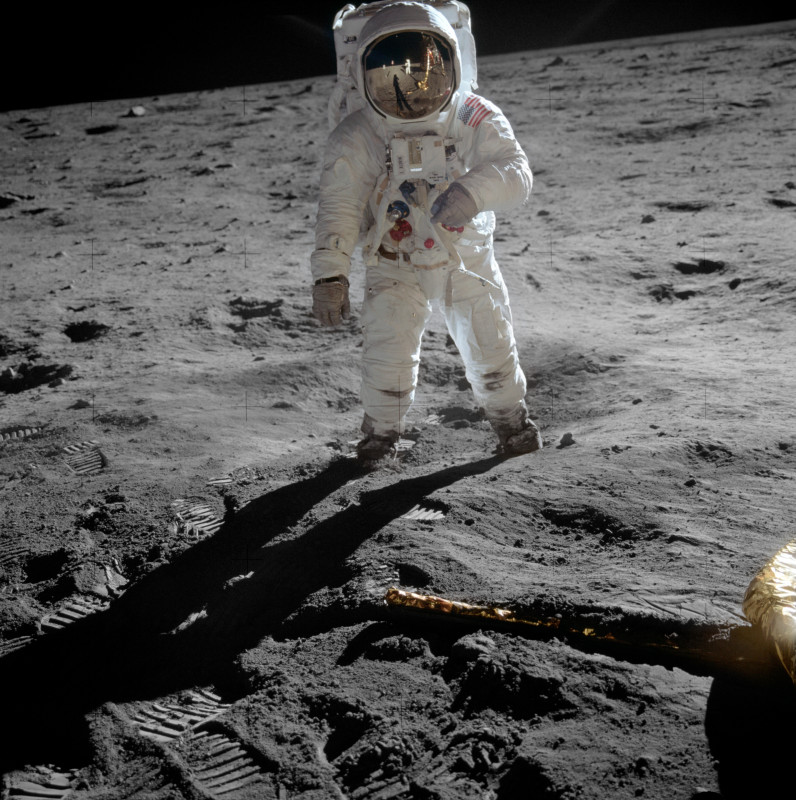Apollo 11 was a U.S. spaceflight launched by NASA from July 16-24, 1969, achieving the first human landing on the Moon. On July 20, 1969, Commander Neil Armstrong and Lunar Module pilot Buzz Aldrin landed the Lunar Module Eagle, and Armstrong became the first person to walk on the Moon on July 21. Aldrin followed, and they spent over two hours exploring Tranquility Base, collecting lunar material. Michael Collins piloted the Command Module Columbia in lunar orbit while Armstrong and Aldrin spent 21 hours and 36 minutes on the Moon before returning to Columbia.
1903: Wright Brothers' First Flight
In 1903, the Wright brothers made their first successful flight, and a piece of wood from the Wright Flyer's propeller and fabric from its wing were carried by Neil Armstrong on Apollo 11.
October 4, 1957: Soviet Union Launched Sputnik 1
On October 4, 1957, the Soviet Union launched Sputnik 1, the first artificial satellite, escalating the Space Race during the Cold War.
May 5, 1961: Alan Shepard's Suborbital Flight
On May 5, 1961, Alan Shepard became the first American in space, completing a 15-minute suborbital journey.
May 25, 1961: Kennedy's Urgent National Needs Address
On May 25, 1961, President Kennedy addressed the United States Congress on "Urgent National Needs."
June 1961: Kennedy Proposed Joint Moon Landing to Khrushchev
In June 1961, President Kennedy met with Nikita Khrushchev and proposed a joint Moon landing project, which was not accepted.
July 1962: NASA Announced Lunar Orbit Rendezvous
In July 1962, NASA head James Webb announced that lunar orbit rendezvous would be used for the Apollo missions, involving a command module, service module, and lunar module.
September 12, 1962: Kennedy's Speech at Rice University
On September 12, 1962, President Kennedy delivered a speech at Rice University where he spoke about the goal of landing a man on the moon.
September 20, 1963: Kennedy Proposed Joint Moon Landing to the United Nations
On September 20, 1963, President Kennedy proposed a joint Moon landing mission to the United Nations General Assembly.
January 27, 1967: Apollo 1 Fire
On January 27, 1967, the Apollo 1 mission was halted due to a fire that killed astronauts Gus Grissom, Ed White, and Roger B. Chaffee, leading to a subsequent investigation.
November 20, 1967: Apollo 9 Backup Crew Announced
On November 20, 1967, Neil Armstrong, Jim Lovell, and Buzz Aldrin were officially announced as the backup crew for Apollo 9.
February 8, 1968: Potential Landing Sites Announced
On February 8, 1968, NASA's Apollo Site Selection Board announced five potential landing sites for the Apollo missions, based on data from the Lunar Orbiter and Surveyor programs.
October 1968: Apollo 7 Evaluated Command Module
In October 1968, Apollo 7 evaluated the command module in Earth orbit.
January 8, 1969: Eagle Ascent Stage Arrival
On January 8, 1969, the ascent stage of LM-5 Eagle arrived at the Kennedy Space Center.
March 1969: Apollo 9 Tested Lunar Module
In March 1969, Apollo 9 put the lunar module through its paces in Earth orbit.
April 14, 1969: Armstrong to be First on Moon
On April 14, 1969, it was announced in a press conference that Neil Armstrong would be the first to walk on the Moon, settling prior discussions and internal disputes.
May 1969: Apollo 10 Flew Near Site 2
In May 1969, Apollo 10's lunar module flew within 15 kilometers (9.3 miles) of Site 2 and reported that it was an acceptable landing site.
July 1969: Apollo 11 Ready for Launch
By July 1969, all preparations were complete, and Apollo 11 was ready to undertake the final step onto the Moon.
July 16, 1969: Saturn V AS-506 Launched Apollo 11
On July 16, 1969, at 13:32:00 UTC (9:32:00 EDT), the Saturn V AS-506 launched Apollo 11. The launch vehicle started to roll into its flight azimuth at 13.2 seconds into the flight. Full shutdown of the first-stage engines occurred approximately 2 minutes and 42 seconds into the mission, followed by the S-IC separation and the S-II engines ignition. The second stage engines then cut off and separated at approximately 9 minutes and 8 seconds, allowing the first ignition of the S-IVB engine a few seconds later.
July 20, 1969: Lunar Module Eagle Landing
On July 20, 1969, the Lunar Module Eagle, piloted by Neil Armstrong and Buzz Aldrin, successfully landed on the Moon at 20:17 UTC, marking the first crewed lunar landing.
August 10, 1969: Quarantine Lifted for Apollo 11 Astronauts
On August 10, 1969, the Interagency Committee on Back Contamination met in Atlanta and lifted the quarantine on the Apollo 11 astronauts, NASA physician William Carpentier, MQF project engineer John Hirasaki, and the Columbia spacecraft. Loose equipment from the spacecraft remained in isolation until the lunar samples were released for study.
August 1969: Anders Accepted Job with Space Council
In August 1969, William Anders accepted a job with the National Aeronautics and Space Council, effective that month, and announced his retirement as an astronaut.
August 25, 1969: Passive Seismic Experiment command uplink fails
On August 25, 1969, the command uplink for the Passive Seismic Experiment failed, marking the end of its active operation.
September 16, 1969: Apollo 11 Astronauts Address Congress
On September 16, 1969, the three Apollo 11 astronauts spoke before a joint session of Congress. They presented two US flags, one to the House of Representatives and the other to the Senate, that they had carried with them to the surface of the Moon. The flag of American Samoa on Apollo 11 is on display at the Jean P. Haydon Museum in Pago Pago, the capital of American Samoa.
November 1969: Nixon requests Apollo 11 lunar sample displays
In November 1969, President Nixon requested NASA to create approximately 250 presentation displays containing Apollo 11 lunar samples. These displays were intended for distribution to 135 nations, the 50 U.S. states and possessions, and the United Nations, including flags, even one of the Soviet Union, that had traveled on the Apollo 11 mission.
December 14, 1969: Passive Seismic Experiment downlink fails
On December 14, 1969, the downlink for the Passive Seismic Experiment failed, ending all data transmission from the experiment.
1969: Apollo 11 mission took place
In 1969 the Apollo 11 mission took place.
1969: "Armstrong, Aldrin and Collins" song released
In 1969, The Byrds released the song "Armstrong, Aldrin and Collins" on the album Ballad of Easy Rider, referencing the Apollo 11 landing.
1970: Nixon gives Apollo 11 lunar sample displays
In 1970, President Nixon gifted the Apollo 11 lunar sample displays as goodwill gestures to 135 nations, the fifty U.S. states and possessions, and the United Nations. Each display contained Moon dust from the Apollo 11 mission and flags, including one of the Soviet Union, taken along by Apollo 11.
1971: Eisenhower Dollar Coin Release
In 1971, the Eisenhower dollar coin was released, featuring the Apollo 11 patch design for the eagle on its reverse side.
1976: Collins' Columbia Reference
In Michael Collins' 1976 book, he stated that the Command Module Columbia was named in reference to Christopher Columbus.
1979: Susan B. Anthony Dollar Unveiled
In 1979, the Susan B. Anthony dollar was unveiled, also using the Apollo 11 patch design for the eagle.
1988: STS-26 Crew Experience
In 1988, STS-26 became the next American mission after Apollo 11 where all the crew members had prior spaceflight experience, with Apollo 10 being the first.
2001: Kraft Autobiography Revealed Moon Decision
In his 2001 autobiography, Chris Kraft revealed a meeting to ensure Aldrin would not be the first to walk on the Moon, leading to a change in the flight plan.
July 15, 2009: Life.com releases unpublished Apollo 11 photos
On July 15, 2009, Life.com published a photo gallery featuring previously unreleased photos of the Apollo 11 astronauts, taken by Life photographer Ralph Morse before the mission's launch.
July 2009: Luna 15 Transmissions Released
In July 2009, for the 40th anniversary of Apollo 11, the Nuffield Radio Astronomy Laboratories released transmissions recorded from Luna 15 during its descent.
July 20, 2009: Apollo 11 astronauts meet with President Obama
On July 20, 2009, Neil Armstrong, Buzz Aldrin, and Michael Collins met with President Barack Obama at the White House. Obama expressed hope for a new generation of explorers and reiterated his commitment to NASA.
August 7, 2009: Apollo 11 astronauts awarded Congressional Gold Medal
On August 7, 2009, the three Apollo 11 astronauts were awarded the Congressional Gold Medal, the highest civilian honor in the United States, through an act of Congress.
July 2010: Re-synchronized Apollo 11 descent recordings released
In July 2010, voice recordings and film footage from Mission Control during the Apollo 11 powered descent and landing were re-synchronized and released to the public for the first time.
June 10, 2015: Resolution introduced for Apollo 11 commemorative coins
On June 10, 2015, Congressman Bill Posey introduced resolution H.R. 2726 to the United States House of Representatives to direct the U.S. Mint to design and sell commemorative coins in gold, silver, and clad for the 50th anniversary of the Apollo 11 mission.
2015: Armstrong's widow discovers Lunar Module items
In 2015, after Neil Armstrong's death, his widow discovered a bag in his closet containing items that should have been left on the Lunar Module Eagle, including the 16mm Data Acquisition Camera. The camera was used to capture images of the first Moon landing.
January 24, 2019: Apollo 11 Fiftieth Anniversary commemorative coins released
On January 24, 2019, the United States Mint released the Apollo 11 Fiftieth Anniversary commemorative coins to the public via its website.
March 1, 2019: Apollo 11 documentary premiered in IMAX
On March 1, 2019, the documentary film "Apollo 11", which features restored footage of the 1969 mission, premiered in IMAX theaters.
July 19, 2019: Google Doodle tributes Apollo 11 Moon landing
On July 19, 2019, the Google Doodle paid tribute to the Apollo 11 Moon landing, featuring a link to an animated YouTube video with voiceover by astronaut Michael Collins.
2019: Apollo 50 Festival
In 2019, the Smithsonian Institute's National Air and Space Museum and NASA sponsored the "Apollo 50 Festival" on the National Mall in Washington, D.C. The three-day event (July 18-20, 2019) included exhibits, activities, live performances, and speakers like Adam Savage and NASA scientists.
Mentioned in this timeline
IMAX is a proprietary system utilizing high-resolution cameras film formats...
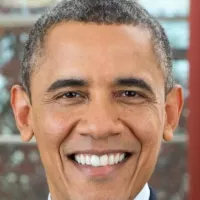
Barack Obama the th U S President - was the...
The United States of America is a federal republic located...
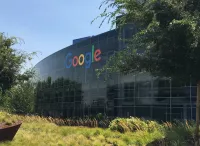
Google LLC is a multinational technology company specializing in online...
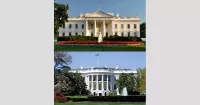
The White House located at Pennsylvania Avenue NW in Washington...
The Union of Soviet Socialist Republics USSR existed from to...
Trending
Cristela Alonzo is an accomplished American stand-up comedian actress writer and producer She made history as the first Mexican American...
26 days ago Marcus Freeman: Notre Dame coach considered for Giants head coaching vacancy in NFL.
2 months ago ACA Subsidies Expiration Fuels Premium Fears Amid Government Shutdown, Impacting Covered California

1 month ago Cam Newton Reacts to Drake Maye's Taunt; Patriots Champ Rips Newton's Criticism.
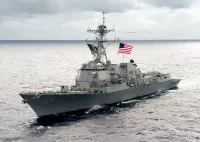
2 months ago Upstart's Q3 Earnings: Mixed Results, Soft Q4 Guidance, and Stock Slides After Announcement.
2 months ago Great Salt Lake Dust Cost Revealed; Ogden Canyon Restaurant Set to Reopen.
Popular

Stranger Things created by the Duffer Brothers is a popular...

XXXTentacion born Jahseh Dwayne Ricardo Onfroy was a controversial yet...
The Kennedy Center Honors are annual awards recognizing individuals and...
Turning Point USA TPUSA is an American nonprofit organization founded...

Bernie Sanders is a prominent American politician currently serving as...

Candace Owens is an American conservative political commentator and author...
